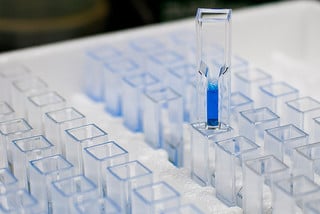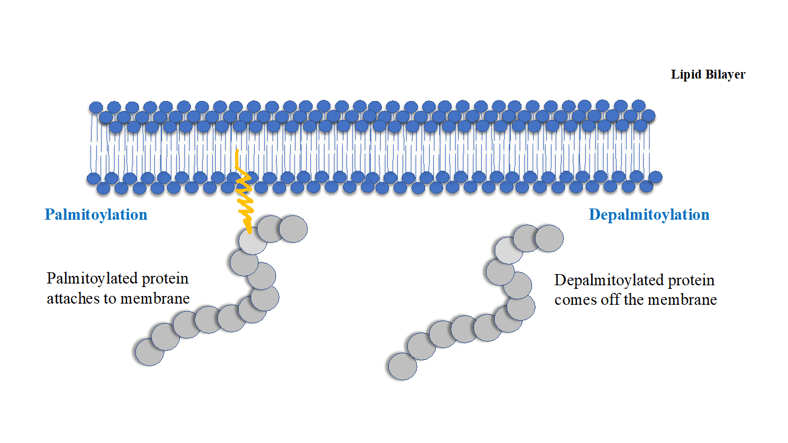The Bradford assay is a fast and efficient colorimetric assay to determine the protein concentration in a wide range of solutions and is widely used for protein content of cell fractions and protein concentrations for gel electrophoresis. It is often done before an SDS-PAGE analysis. Using the reagent Coomassie Brilliant Blue G-250, the solution undergoes a visible change in color when the dye binds to proteins via van de Waals and electrostatic interactions, causing a shift from a dark red to a deep blue. This is a result of stabilization moving the absorbance maximum of the dye from 470 to 595 nm. Tested samples typically take less than five minutes to reach the indicative measures of 595 nm absorbance concentration, making the Bradford assay both reliable and quick.
The Protein Man

Recent Posts
Bradford Assay for Protein Concentration | G-Biosciences
Topics: Protein Estimation
Purify Proteins Fast: How FPLC Speeds the Process
Many researchers use high pressure liquid chromatography (HPLC) to separate and measure concentrations of small molecules. However, this method is relatively ineffective when trying to extract proteins and other biochemicals. Organic solvents used in HPLC place restrictions on these biochemicals, which are unable to function at high temperatures. For this reason, in 1982, Pharmacia developed fast protein liquid chromatography (FPLC) to overcome the weaknesses of the HPLC and institute an effective, quick means to extract and purify biochemicals - especially proteins.
Topics: Protein Purification
In a cell, protein degradation and synthesis maintain the balance of proteins, where old proteins are degraded into amino acids, which are further used in the synthesis of new proteins. Proteases/Peptidases play an important role in protein degradation. Proteases are present in almost all living cells. In a living cell, protease action is regulated by external as well as internal factors. Some proteases are inactive under normal conditions, but are activated only when necessary. For example, during apoptosis, Pro-caspase (inactive) converts to Caspase (active). Sub-cellular localization of proteases also helps in their regulated activity. Most of them are localized to sub-cellular organelles like lysosomes and thereby restricted their activity only to those proteins directed to lysosomes.
Topics: Protease Inhibitors
Protein palmitoylation and sulfhydryl chemistry methods to capture palmitoylated proteins
Proteins undergo many kinds of post translational modifications (PTMs), such as phosphorylation, ubiquitination, SUMOylation, geranyl-geranylation, farnesylation, myristoylation, acetylation, succinylation and palmitoylation. PTMs can be reversible or irreversible, they can be dynamic or stable. PTMs enable fine tuning of protein function in response to various internal and external signals and therefore they have profound effects on cellular physiology, metabolism, survival and growth.
Topics: Protein Labeling







